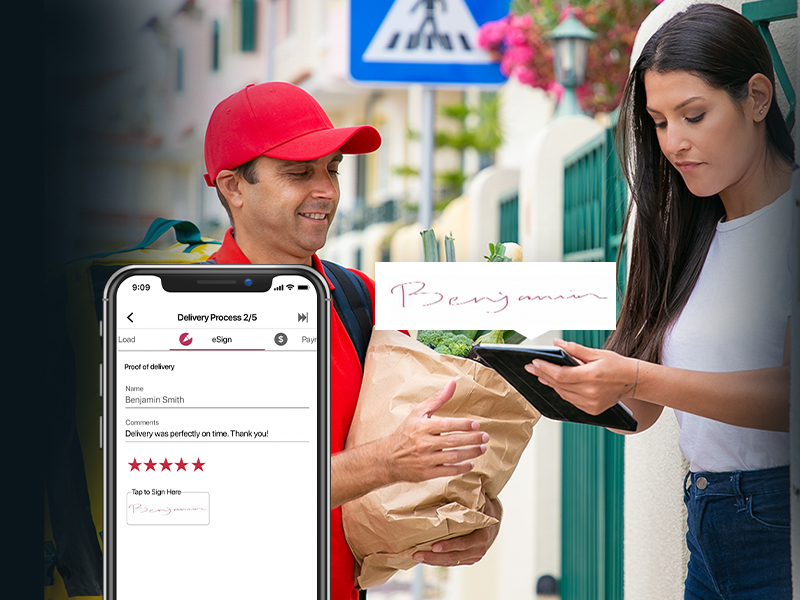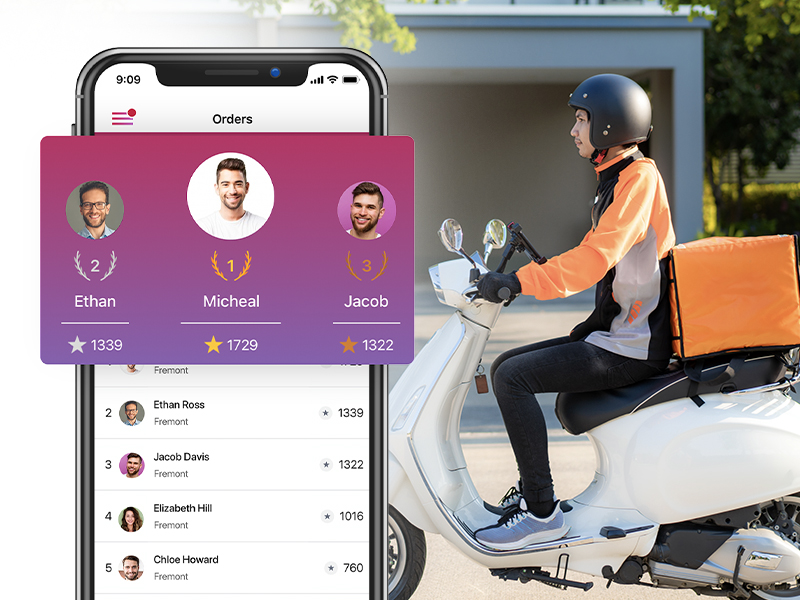10 must-have features on your delivery driver’s app
Driver tracking, efficiency, and deployment play a crucial role in the logistics process. A driver app can help optimize the delivery service and keep them organized to reach the correct destination within the set delivery expectation. In this blog, we will go through the numerous challenges faced by the dispatcher or the carrier related to fleet tracking, the driver getting the deliveries made, and how one can ensure optimized route planning for a smooth experience for the end-user. Having a real-time application that can track driver behavior and help with route optimization will play a major role in the logistics process for transportation management systems.
Some of the essential capabilities that can help resolve your logistics challenges are as follows-
Online/ offline status: Getting to know when your driver is available would be of importance to help schedule your deliveries accordingly. Once this information is available, dispatchers or carriers can allocate drivers to get the deliveries made. This feature can be useful for organizations that pay drivers daily. Driver tracking will ensure proper delivery scheduling and ensure efficient use of your fleet.
Break time: A driver is a human at the end of the day and would require breaks to ensure safe driving procedures are followed. If you are calculating your real-time deliveries, factoring in the break time while computing ETAs will be ensuring customers are alerted accordingly, thus providing for a better customer experience.
Order list and status: Giving the driver an order list of the deliveries they have to pick up and deliver will ensure route optimized deliveries without causing delays. The complete summary of the trip that the driver has to undertake will ensure both customer and driver are aware of the timeline to meet for the delivery. The dispatcher will be able to continuously track the driver’s location. The driver when reaching the customer’s address can also communicate about the delivery to ensure lower rates for missed deliveries for last mile service. If there are deliveries that need to be assigned from nearby areas, the order list can allow the driver to accept or decline the request.
Delivery proof: Once the parcel or the courier is handed over to the customer, a delivery proof will ensure the completion of the task. This will ensure reduced customer delivery complaints or a no-show from the delivery person. A signature, photo of the parcel, and money transfer (cash on delivery, online payment, card payment) can all be recorded as electronic proof of delivery (ePOD).

Trip summary: This will keep a track of the entire duration for which the driver has made the deliveries. This will play as a one-stop solution for the orders delivered, canceled, transferred, amount collected, any additional expenses like parking charges, etc. that the driver had to incur. One can also set a calendar to ensure multiple deliveries are not assigned that might be in a different direction of travel. A logistics route planner will ensure maximum visibility of the driver.
Bulk pickup and deliveries: Getting a custom delivery done at the same place? Bulk pickup (multiple items) and deliveries can be convenient for the driver to deliver the product with just a single sign from the warehouse manager or the place of delivery. This can help drivers save time on taking multiple signatures for every item they have to deliver at the same place. These types of deliveries can be useful, especially in the Consumer packaged goods industry.
Order transfer: Be it for vehicular breakdown or location-based deliveries, an order transfer will help the driver transfer goods to a nearby driver to ensure efficient deliveries, in case of emergencies. A driver can set an order transfer for location-based scheduled deliveries to areas they might not be able to deliver due to some restrictions.
Hotspots: Suppose the driver works only for a few hours and wants to get the maximum orders, using this feature can help them be assigned to areas where demand is more and driver supply is less. This can help drivers earn more due to higher volumes of on demand delivery service and eventually meet customer needs. This can be extremely helpful for QSR markets.
Driver performance: Giving recognition to your drivers can help motivate them to perform better. You can have a leaderboard for drivers performing exceptionally well and also assign orders as per ratings in the future.

Loading and unloading via scan: Giving the driver the authority to scan AWB, crates, and other items when loading and unloading will ensure smoother and faster operations for last mile delivery.
Accept and reject orders: One of the best ways a dispatcher can improve the efficiency of their carriers is by giving drivers the ability to accept and reject orders when en route. The use of delivery route planning will ensure lower trips rates and efficient use of drivers onboard. For example, if a driver is about to end his trip, an order request can be sent to the driver for the next trip which can be in the nearby vicinity. The dispatcher will have access control on whether to give the driver the ability to accept or reject orders.
A driver app will not only be beneficial to an organization to track the driver’s performance but also help the driver ensure order pickup and deliveries happen within the set duration, setting the best route optimization for smooth logistics functioning and route planning.
100








@LogiNext